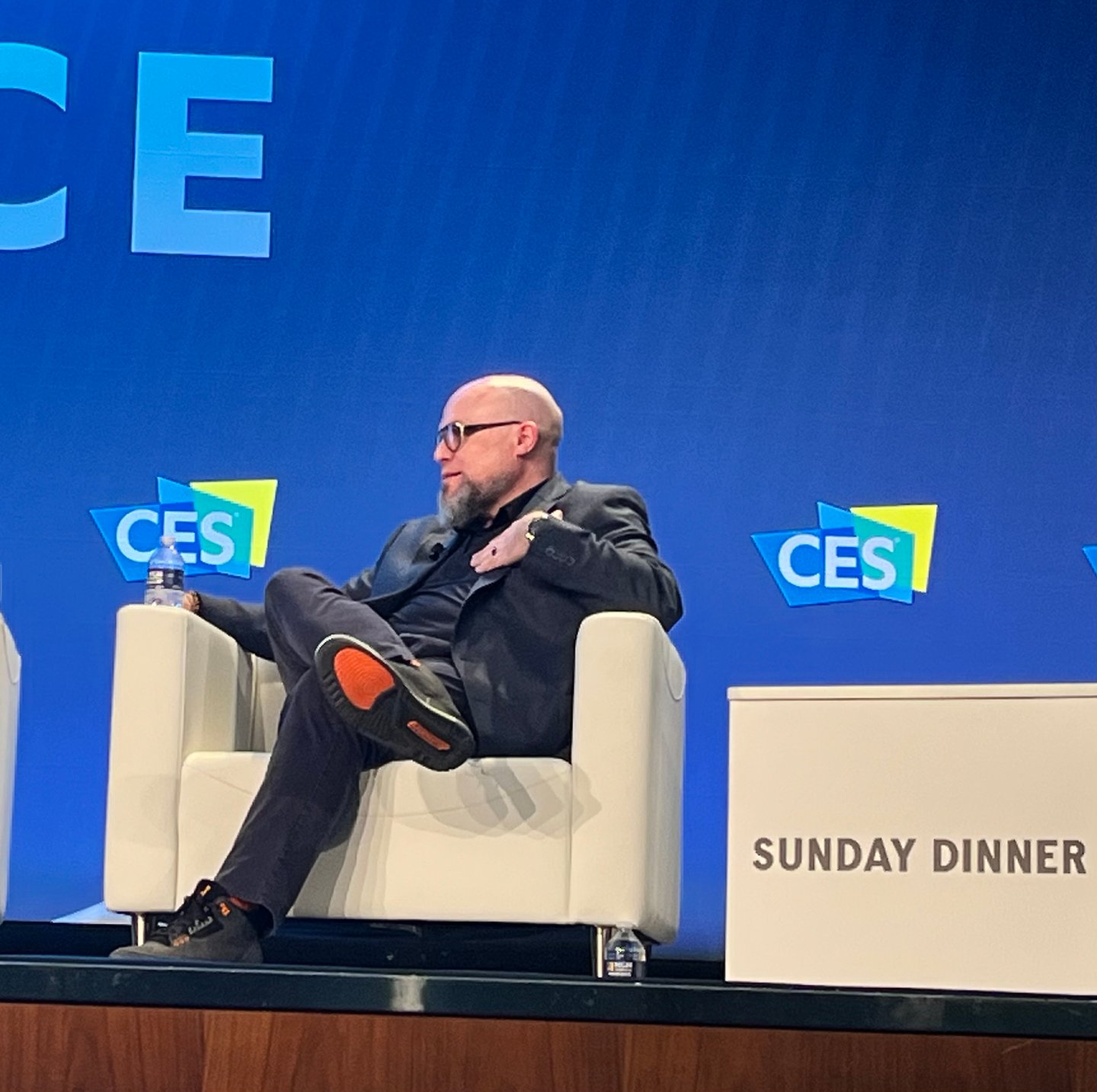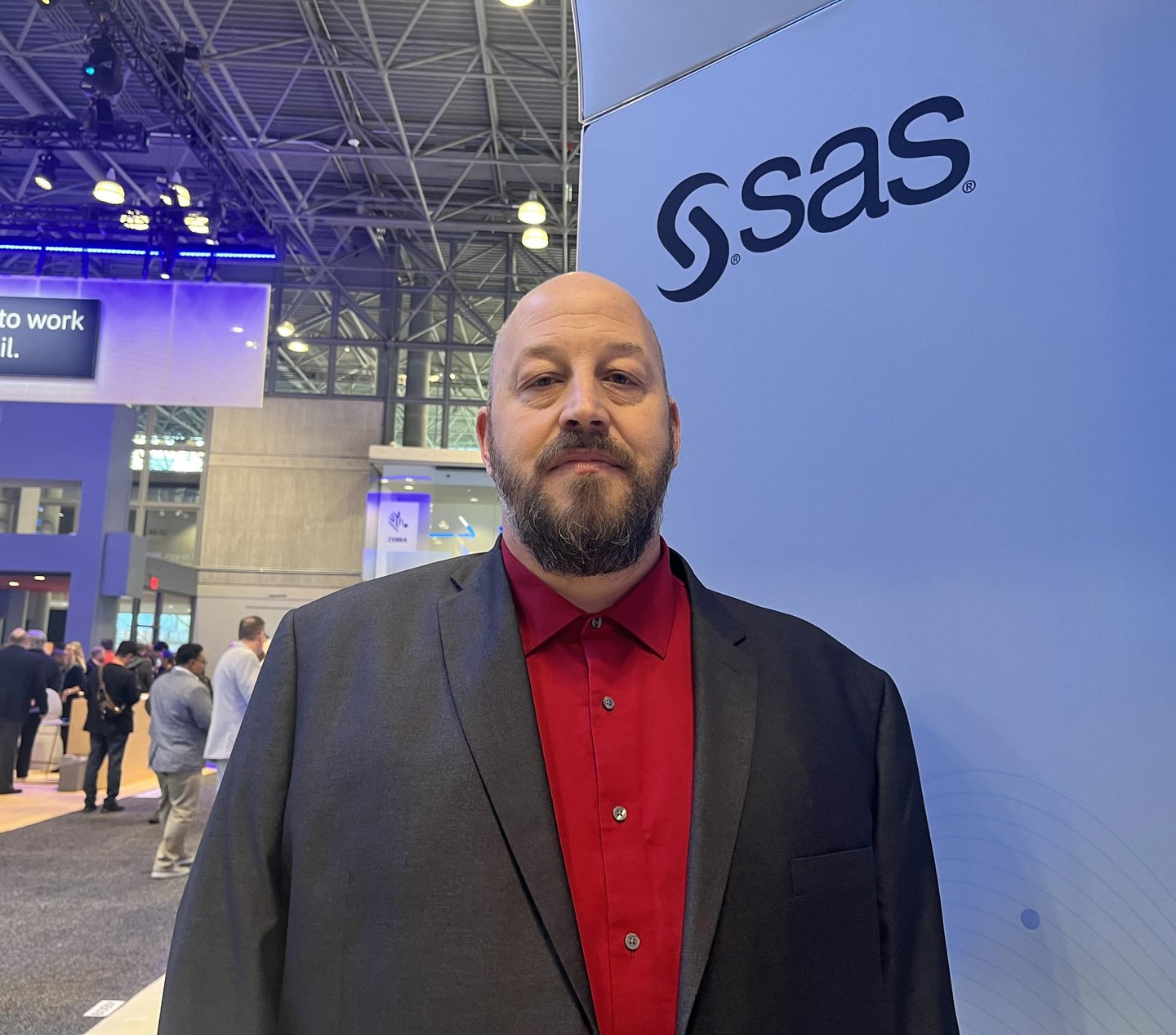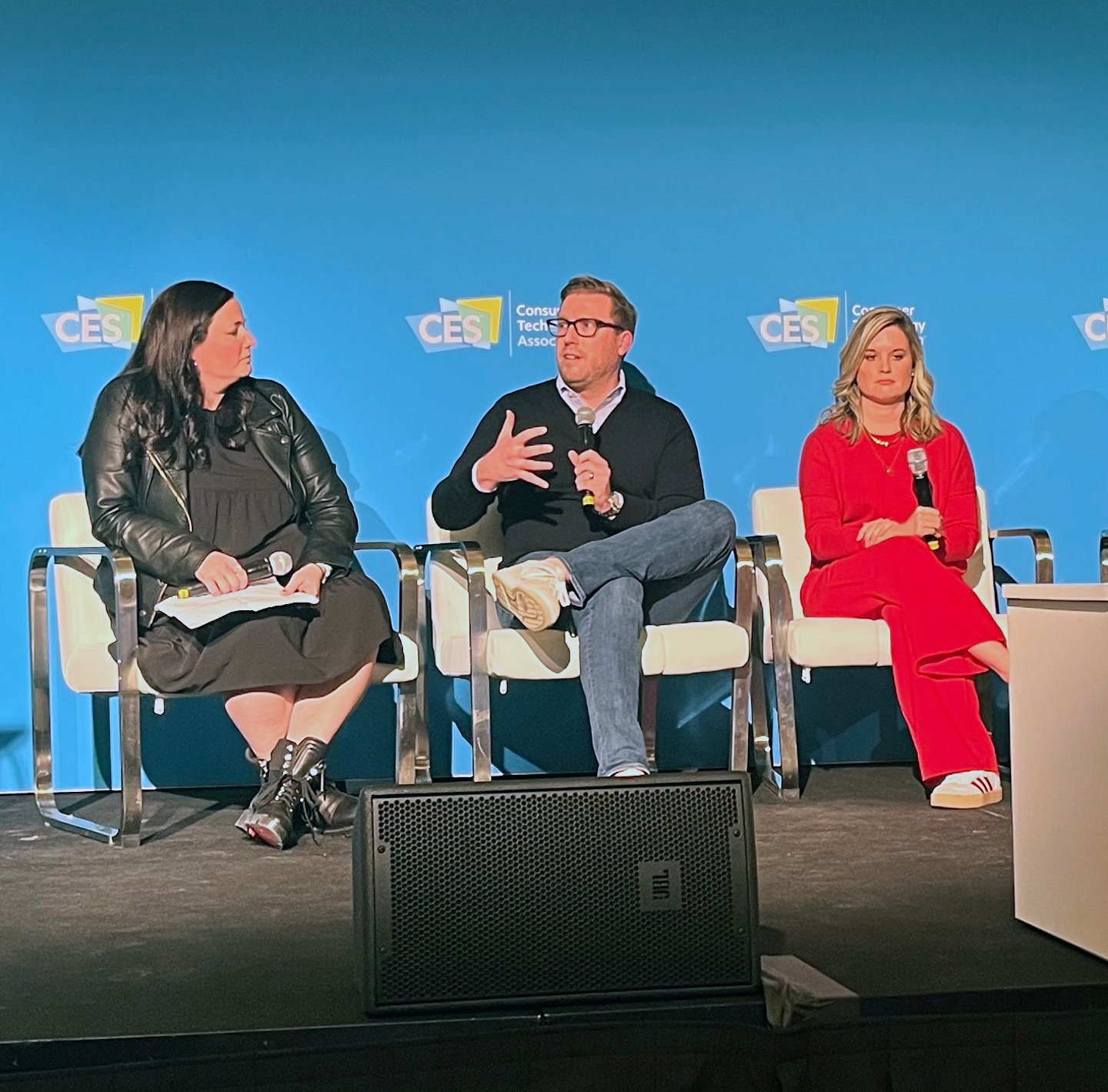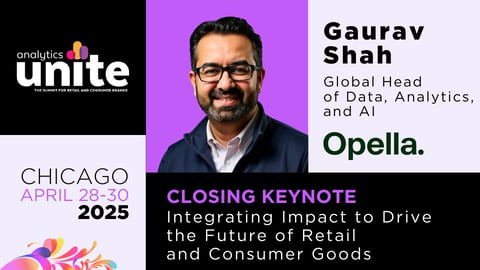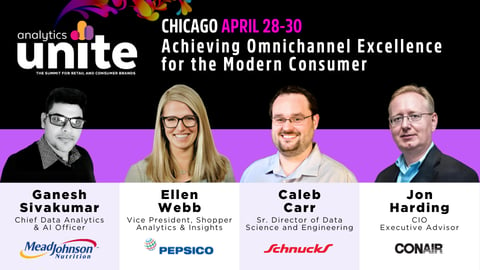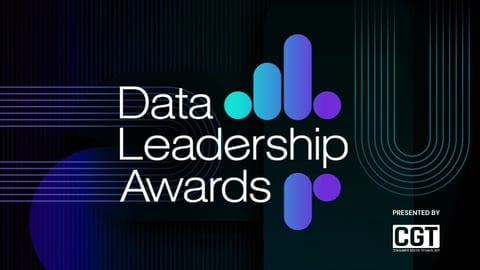Hershey, General Mills, Kenvue, Yeti: CPG Bites From CES and NRF 2024
The consumer goods industry was a major player at two of the biggest business events in January: CES in Las Vegas and NRF in New York. When it comes to leveraging technology in CPG, it’s no surprise to anyone who doesn’t reside under a glacier that artificial intelligence was a key theme throughout both shows. From keynotes to breakouts, the events were packed with executives sharing the various ways they’re exploring and grappling with the future of AI, as well as consumer experiences, inventory visibility, and retail media.
Here are some snippets from some of the largest CPG manufacturers in the world at two of the largest shows in the industry. Be sure to sign up for our newsletters to keep receiving the latest executive insights in your inbox each week.
(Looking for more in-depth coverage about NRF? Check out RIS News’ comprehensive wrap-up for everything you could possibly want to know about retail technology at the show.)
General Mills
Doug Martin, chief brand and disruptive growth officer of General Mills, shared insight at CES into the company’s new marketing playbook, including when it’s a good idea to act on a viral TikTok trend — and when it’s not. Among the highlights:
Connecting consumers with real fans, not just stars: “Part of it is us getting over some of our Midwest ‘Aw shucks’-ness and realizing people don’t always get passionate about cereal. I think what has been a transition for us is trying to stop talking about targets — which feels transactional — and start talking about fans. ... People are more open to surprising connections with fandoms than what we anticipated.”
Where AI fits (for now): “We’re focused on how do we leverage [AI] to improve some cost efficiencies, including some unsexy things? Like we literally have 6,000 different images of boats in a vast digital content library. … How do we leverage tools that enable our people to find the things we have right now so we can skip some time, skip some expense, and get to invest in maybe a different partnership.”
Knowing when seizing a social trend is the right move: “A consumer amplified a two-year-old tweet about Fruit Roll-Ups around ice cream, and we sold months of inventory of Roll-Ups because it went crazy. It’s very hard to predict when it goes crazy, but you have to let the team be ready to activate on it when it does."
… And when it’s not: “I get a lot of questions about guardrails, and there’s some nervousness about what you do activate on … I feel like we have the right kind of checks and balances in there, but we do always have to realize there are conversations that we don’t want the brand to engage in.”
The Hershey Company
The Hershey Company’s Rick Dimon delivered a quick-hitting presentation at SAS's NRF booth that highlighted how they’ve made adoption and education the keystone principles of their demand planning tools to improve final forecasts.
Accuracy is king: “You can have very accurate models that are very difficult to explain, or you can have simple models that are very easy to explain. ... We're unwilling to give up a single percentage point of accuracy [for] explainability. Having the most accurate number allows us to take explainability with a grain of salt. It's a guide. It's directional, but the overall number is the best we can produce.”
Limit noise as much as you can: “Limit your explainability to a small number of significant causals. Those causals will be different for everyone, but do your research and find out what's insignificant for you. The minutes of sunshine in a day may be heavily correlated for somebody, but at Hershey, it's just noise.”
It’s not a competition: “The forecast modeling team is trying to build the best possible statistical forecast, and demand planners are using all their insights to improve on that and get the best possible forecast to satisfy. I never want the statistical model to be beating the final forecast. We are one team."
Predicting the future is tough! “Let's be honest — people forget that's exactly what we're trying to do. The nature of my job is that I'm always wrong. I've been wrong every single day of my career, and I'm going to be wrong tomorrow. And there is no limit to the people waiting outside my office waiting to tell me how wrong I am. So the first goal is to minimize that wrongness. Instead of being wrong by the size of the haystack, let’s try to be wrong by the size. of the needle.”
Bottom line: “Always remember that data science rule: If at first you don't succeed, call it Version 1.0.”
Yeti
Scott Streit, director of software engineering, joined a fireside chat with ParcelLab founder Tobi Buxhoidt at NRF to share how Yeti is embedding its returns portal within its own dot-com.
Why it matters: Making this investment means Yeti can not only leverage their existing site tooling and data analytics capabilities, but they can also apply all marketing and personalization campaigns to the return. All of this is expected to improve the customer experience through greater visibility and enhanced communications.
Never leave a future sale on the table: While a return may never be a company’s goal, an opportunity exists to woo a customer back with personalized content during the return — or make them a customer again down the line.
Meet them where they want to be: “Some people will want to engage with a chatbot or customer service, live chat. Some people will want to reach out through email. Some people want to call in.. Some people don't want to do any of that, and we have a self-service returns portal that allows them, day or night, to come in [and] get a label, all without having to talk to anybody. “
Bottom line: “At the end of the day, we want to have a satisfied customer,” noted Streit.
Kenvue
Much like AI, retail media was a key theme throughout both shows. At a panel hosted by IPG at CES, Kevnue’s Matthew Fantazier, head of Integrated media, and Kacie McKee, VP of omni performance and e-commerce acceleration, talked collaboration, conversions, and making clear choices.
The importance of making hard portfolio choices (McKee): “[We’re] making sure we're very clear on the categories where we really need to lean in vs. where we don't, and those are kind of how [we] talk about that from an investment strategy perspective. And, externally, then what does that mean in partnership as our customers and our vendors start to understand is it retail media? Is it all media? Is it both? And what does that mean for us to come to the table in terms of partnership?”
Tech questions worth asking (McKee): “Some of the emerging conversations we're having [are] around what does it mean to have Roku driving commerce? And what does it mean to have TikTok commerce as an opportunity? … How leaned into it should we be? What is internal vs. what is external? What partners do we go with? Or do we build it ourselves?”
2024 predictions (Fantazier): "I think 2024 is the year of partnerships. … I'm extremely bullish on this because I really don't think the winners are going to do it alone or with individualized partnerships. I think it's going to take partnership across retail media, data, technology. We're already seeing it. That's a trend that's not new, necessarily, but it's starting to accelerate.
"Because the reality is we're hitting a ceiling of what retail media or commerce media is [and] getting out of just being a trade line. And really how you think about this holistically to do that is partnership, or else you'll never get out of the more tactical math, trade sort of allocation discussion. That's how you get over the hump and really think about it on more of a wider scale.”
(And from McKee): "For me, obviously, with my being head of omnichannel, I think that conversation has been around for a while. The word omnichannel, frictionless, you name it, there's a buzzword for it. I think companies are finally ready to walk the walk vs. talk to talk. So it's moving out of the vocab into actual practice. So what does that mean for media buying? What does that mean for how you're organized? What does that mean for partnerships? I predict sort of the rise of omnichannel in action vs. just kind of conversating about it.”
Kraft Heinz
Helen Davis, senior VP and head of North America operations, shared information at NRF about how data science sits within Kraft Heinz. Among the highlights:
There are 50 data scientists dedicated to her operations organization, and they work as a trio with their functional leads and IT to continue feeding transactional data into the company’s data lake. The groups of data scientists, formed in Agile pods, go on weekly sprints and report out to the Kraft Heinz cross-functional leadership team on a quarterly basis.
The company is also working on a generative AI “Ask Me Anything” app, known as KraftGPT, that’s intended for employees to obtain quick insights into things like, “Why are we selling so much bacon?”
Bimbo Bakeries and Kimberly Clark
Bimbo Bakeries USA is leveraging consumer insights and media data to help shape its direct-store delivery (DSD) and product strategies, and results are paying off via improved fill rates at Walmart. Kimberly-Clark, meanwhile, is using this information to better identify valuable loyalty opportunities and potential product missteps.
Both shared insight into how they’re finding success in using data culled from the Walmart Connect and Luminate data platforms, as well as other technologies, at a Walmart-hosted panel at CES.
In one example, Kimberly-Clark leveraged data from a switching report after relaunching its Cottonelle brand that helped identify they should revert the changes.
“From that, we were able to extrapolate if something is happening at Walmart, is happening in other places, so we’re now re-assessing some of the packaging choices we made,” said Kris McDermott, director of omnichannel marketing at Kimberly-Clark.
Nestle Purina
Nestle Purina is incredibly optimistic about the potential commerce opportunities and societal impact its Petivity IoT device holds. Developed to help pet owners identify early signs of such irreversible health issues as renal failure, Petivity leverages sensors and AI to track a cat’s litter box behavior and detect any indicating a potential health issue.
“Interestingly, this provides a window into human behavior: when you’re adding litter, when you’re scooping, how you’re scooping,” said Mark Donavon, Nestle Purina head of digital strategy and ecosystem development, at a CES panel.
Both the cats and their owners are generating first-party data for Nestle Purina; while Donovan said it’s still early days, they expect to learn more about consumer behavior at home based on their pet’s behaviors.



